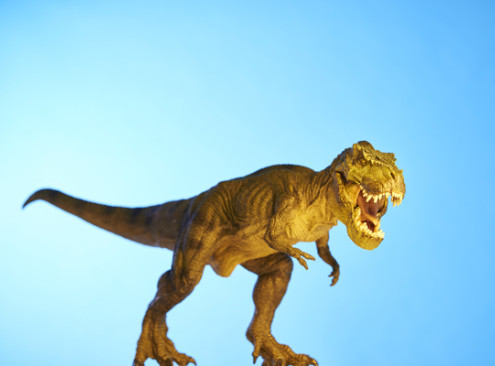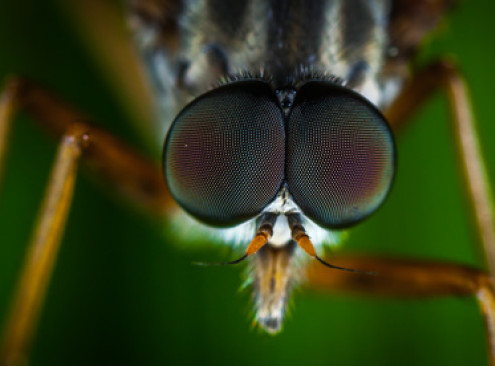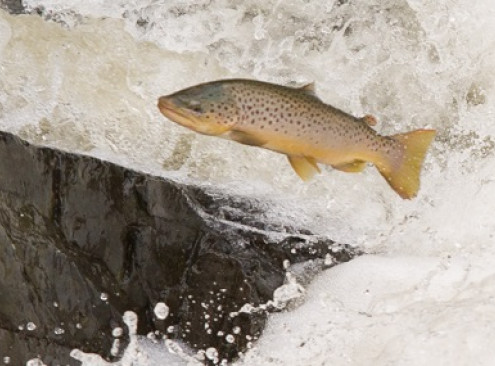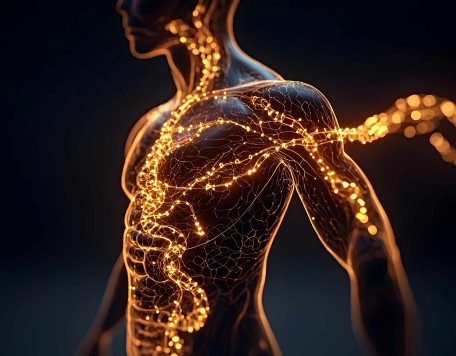© Pint of Science, 2025. All rights reserved.
The Dinosaur that ran from Dracula and slipped on a Fish! In order to look into the past or even extinct species we explore their stamps left on earth. Fossilised tracks are a way to learn about the biology, ecology and behaviour of a species. In the first talk footprints of dinosaurs bring the giants back to life in simulations. Another approach to learn about a species are molecular methods. The common fruitfly's behaviour is changed, from Count Vlad to Dracula. The brown trout has the option to move to the sea or stay home in the river. Should they stay?
Dinosaurs, Humans, and Apples
Dr Paige de Polo
(Lecturer in Vertebrate Biology)
What do dinosaurs, humans, and apples all have in common? They are subject to the laws of physics! Come learn how scientists can use computer simulations of both mud and muscles, high speed videos of animal movements, and fossil footprints to understand dinosaur evolution. These high-tech tools help us to understand fossils as the traces as living breathing animals that not so different from the inhabitants of the planet today.

How Count Vlad turns into Dracula
Dr Mirko Pegoraro
(Lecturer in Epigenetics)
Most animals have a favourite time of day to be active: some love the sunshine (the diurnal Count Vlad), others are night owls (the nocturnal Dracula), and some are twilight fans (crepuscular). We do not really know why some animals prefer daytime over night-time. In the lab, fruit flies (Drosophila melanogaster) are like party animals at dawn and dusk. We finally found out how to turn sunshine loving Count Vlad flies in night dwelling Dracula flies.

Should I Stay or Should I Go?
Dr Robert Wynne
(Teaching Fellow in Ecology and Marine Biology)
Imagine you are a brown trout living in a cool, freshwater stream. Life is pretty good, food is decent, the current is nice and consistent, and there is shelter under rocks and roots and not too many predators around. But some of your trouty neighbours suddenly disappear, heading off to a bigger river, or maybe a large lake, estuary or even the sea. Why? And more importantly… should you go too?
This is the fascinating world of facultative anadromy, a fancy term for something surprisingly relatable: having a choice.
Unlike their delicious cousin, the Atlantic salmon, brown trout are not locked into one life path. Some choose to stay in rivers their whole lives. Others, feeling adventurous (or maybe just hungry), head out to sea, returning years later, often bigger and stronger. This decision is not random—it is shaped by genetics, environment, and interactions between the two!
Why risk the journey? The ocean offers richer feeding grounds, which means faster growth. But it also comes with dangers—predators, salty water, commercial fishing boats and the challenge of finding your way home. Staying put is safer but might mean staying small and facing increased competition for a limited food supply and highly competitive mating market.
So, should you stay, or should you go? For brown trout, it is a life-defining question—and one that scientists are still trying to fully understand.
This is the fascinating world of facultative anadromy, a fancy term for something surprisingly relatable: having a choice.
Unlike their delicious cousin, the Atlantic salmon, brown trout are not locked into one life path. Some choose to stay in rivers their whole lives. Others, feeling adventurous (or maybe just hungry), head out to sea, returning years later, often bigger and stronger. This decision is not random—it is shaped by genetics, environment, and interactions between the two!
Why risk the journey? The ocean offers richer feeding grounds, which means faster growth. But it also comes with dangers—predators, salty water, commercial fishing boats and the challenge of finding your way home. Staying put is safer but might mean staying small and facing increased competition for a limited food supply and highly competitive mating market.
So, should you stay, or should you go? For brown trout, it is a life-defining question—and one that scientists are still trying to fully understand.

© speakers
Map data © OpenStreetMap contributors.
Other Murphy's Distillery & Bar events
2025-05-20
Dive into your Body
Murphy's Distillery & Bar
8 Regent Rd, Liverpool, L3 7BX, United Kingdom
2025-05-21
Tech in the Home, City and Space
Murphy's Distillery & Bar
8 Regent Rd, Liverpool, L3 7BX, United Kingdom



